Today, we’re reviewing Lexar’s Professional 2000x SD and GOLD microSDXC UHS-II cards, two high-performance options for users needing fast, dependable storage across various demanding workflows. These cards are part of a larger ecosystem of Lexar storage solutions designed to work seamlessly together. We’ve covered those in a separate review if you’re also interested in the Workflow Go, the 4TB Workflow SSD or the CFexpress Type A reader.
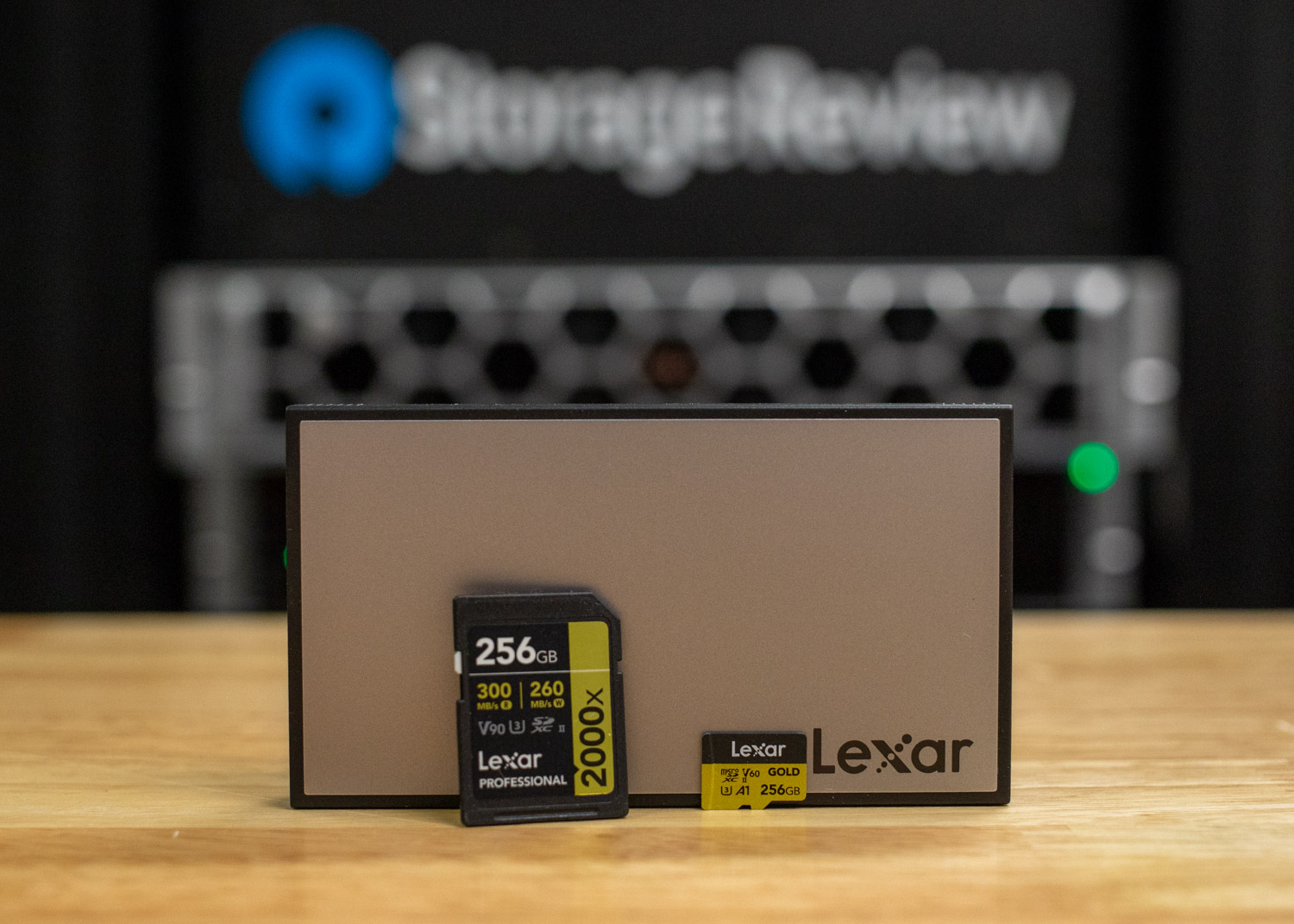
The 2000x SD card caters to professional photographers and videographers capturing high-resolution stills, RAW bursts, and 4K or 8K video. At the same time, the GOLD microSDXC model is geared more toward drone pilots, action cam users, and mobile gamers who need quick access to large files. Though they serve slightly different audiences, both cards aim to keep workflows smooth and transfers fast, especially when dealing with heavy media workloads.
Lexar Professional GOLD 2000x SDHC/SDXC Card Features
The Lexar Professional 2000x SDHC/SDXC UHS-II Card GOLD Series is quoted at up to 300MB/s for reads and 260MB/s for writes. Those numbers make it a viable choice for professional photographers shooting continuous bursts or working with large RAW and JPEG files simultaneously. It also provides the sustained speed required for recording high-resolution 4K and 8K video without risking dropped frames or long buffer times, which can be critical during fast-paced shoots or extended recording sessions.
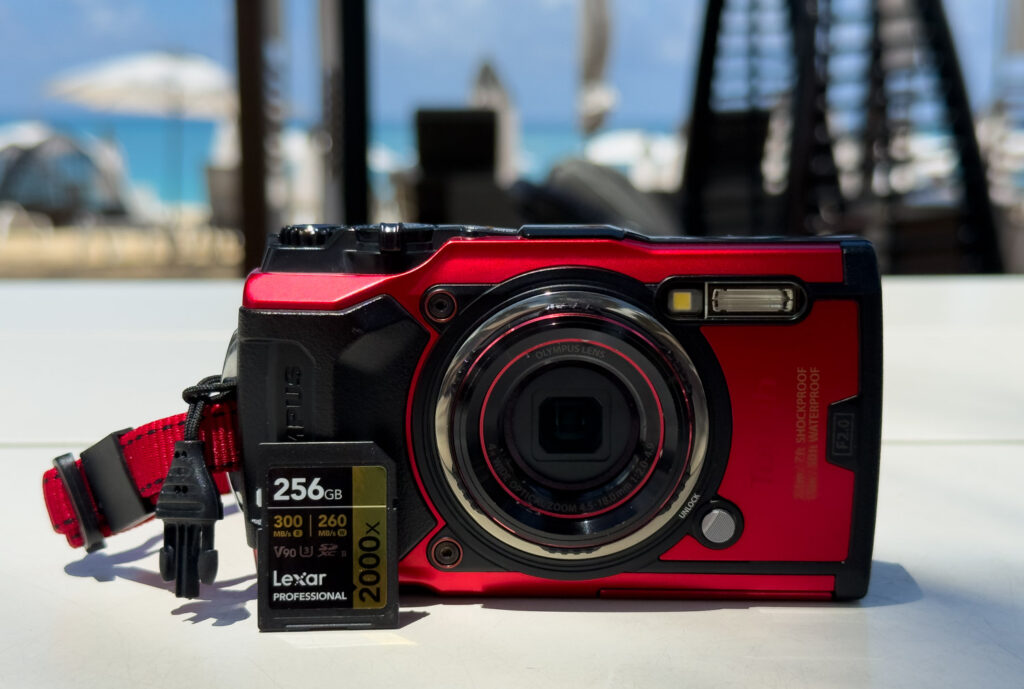
The Lexar SD card also comes with the usual durability features professionals expect. Its rugged design can handle extreme temperatures between -25 °C and 85 °C, and it’s built to resist shock, vibration, and X-ray exposure, making it well suited for challenging field environments. For photographers constantly traveling or working in rough conditions, this offers peace of mind that their data will stay protected. It’s also worth noting that the card is backward compatible with UHS-I devices, adding functional flexibility for those mixing older and newer gear.
For this review, we will examine the 256 GB model, which is backed by Lexar’s limited lifetime warranty.
Lexar Professional GOLD microSDXC Card Features
Shifting to the Lexar Professional GOLD microSDXC UHS-II Card, this micro-sized storage solution specifically addresses the needs of drone operators, action camera enthusiasts, and mobile gamers. It is quoted as having read speeds reaching up to 280MB/s and write speeds peaking at 180MB/s. This should be ample performance for solid data transfer rates and load times, essential when managing extensive footage from aerial photography sessions or high-intensity action recordings.
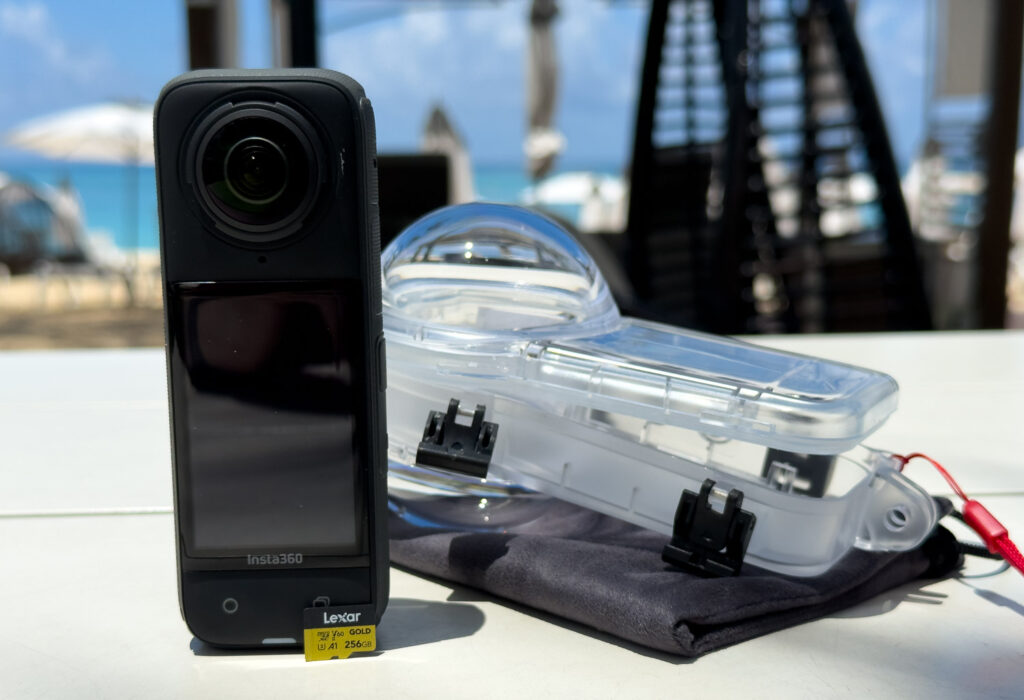
Its V60 rating targets video capture, guaranteeing consistent high-quality 4K UHD and Full-HD recordings without frame drops or interruptions. Drone pilots filming expansive landscapes or anyone capturing fast-paced footage will appreciate that rating, knowing their important shots will stay clean and consistent.
While the microSD version doesn’t come with a lifetime warranty, the microSD model’s 10-year limited warranty is still excellent, giving users long-term peace of mind.
Lexar Professional 2000x SD and GOLD microSDXC Card Pricing
The Lexar Professional 2000x SD Card GOLD Series is priced at $175 for the 256GB model, $95 for 128GB, and $55 for 64GB. The Lexar Professional GOLD microSDXC card is (expectedly) much lower, with the 256GB model at $45 and the 128GB version at $28. (Note: Pricing was updated on May 6, 2025, following a drop shortly after this review was published.)
Lexar Professional GOLD 2000x SD and microSDXC Card GOLD Series Specifications
| Specification | Lexar Professional 2000x SD Card GOLD Series | Lexar Professional GOLD microSDXC Card |
| Form Factor | SDXC | microSDXC |
| Capacity Options | 256GB, 128GB, 64GB | 256GB, 128GB |
| Interface | UHS-II | UHS-II |
| Read Speed (Up to) | 300MB/s | 280MB/s |
| Write Speed (Up to) | 260MB/s | 180MB/s |
| UHS Speed/Speed Class/Video Speed Class | UHS Speed Class 3 (U3) / 10 / V90 | Video Speed Class 60 (V60) |
| Durability | Temperature-proof, Shockproof, Vibration-proof, X-ray-proof | Not specified |
| Operating Temperature | 0°C to 70°C (32°F to 158°F) | -13 to 185°F / -25 to 85°C |
| Storage Temperature | -25°C to 85°C (-13°F to 185°F) | -40 to 185°F / -40 to 85°C |
| Warranty | Limited Lifetime Warranty | 10-Year Limited Warranty |
Lexar SD/microSD UHS-II Card Reader (WF710)
The Lexar WF710 SD/microSD UHS-II Card Reader was used to support performance testing. As its name indicates, this reader has both SD and microSD card slots. What’s handy about this reader is that you can use both slots simultaneously, meaning you can transfer content from two cameras or devices simultaneously without slowing down your workflow. Each slot can deliver transfer speeds of up to 312MB/s and connects via a USB 3.2 Gen 2 Type-C interface. Lexar has bundled the package with a Type-C to Type-C cable and a Type-C to Type-A adapter.
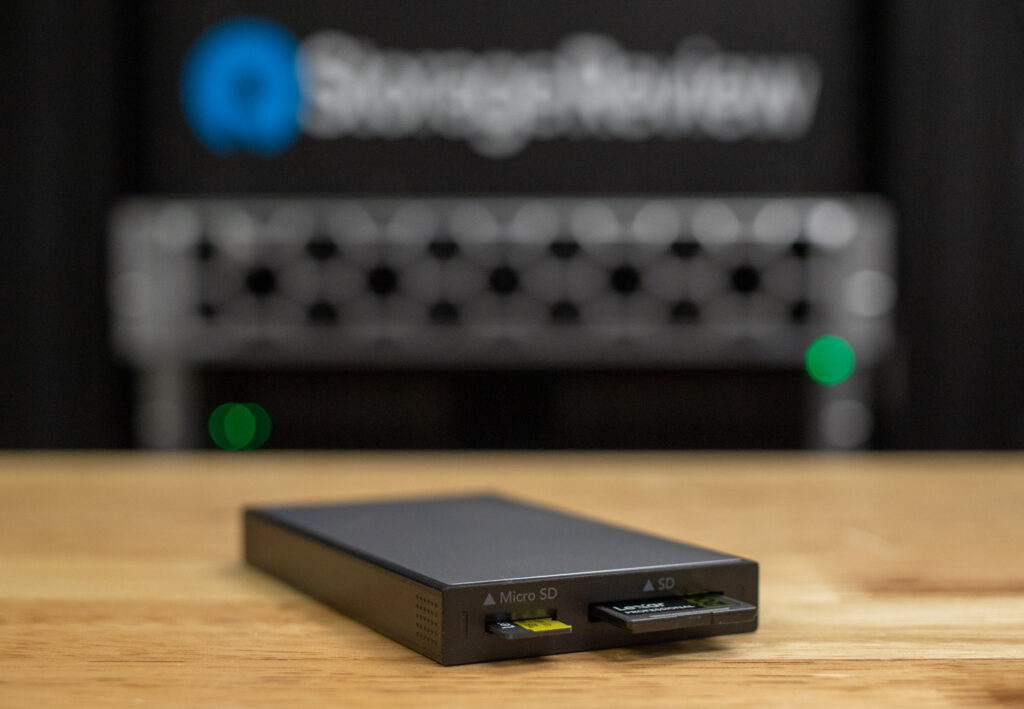
This reader has a clean, minimal design with a smooth aluminum finish that helps resist scratches from everyday use. It weighs 60g and measures 103.4mm by 57.7mm by 12mm (4.07 inches by 2.27 inches by 0.47 inches), offering a good balance between feeling solid in hand without being too bulky. Its slim profile also makes it easy to slip into a camera bag or laptop sleeve, which is especially handy for photographers and videographers who are often on the move.
The WF710 also integrates with Lexar’s Professional Workflow and Workflow Go systems, allowing users to build modular setups that match their storage and transfer needs. This level of flexibility will benefit both professionals managing large volumes of media and users who want more control over their storage setup.
Lexar Professional GOLD microSDXC Card Performance
We paired the Lexar cards with the reader for our performance tests and ran them through our usual Lenovo P520 testbed.
First up is the microSD model, which we compared against the recently reviewed Samsung EVO Select 1TB and the Samsung PRO Ultimate. It’s important to note that all the Samsung cards are UHS-I models, whereas the Lexar Professional GOLD microSD card is UHS-II. As a result, the Lexar card is technically capable of higher transfer speeds and more consistent sustained performance (assuming you’re using a compatible UHS-II device or reader, such as the WF710).
Blackmagic Diskspeed Test
The new Lexar Professional GOLD microSD card reached 158.7MB/s read and 132.5MB/s write in our Blackmagic benchmarking, which fell short of its quoted numbers (especially in reads).
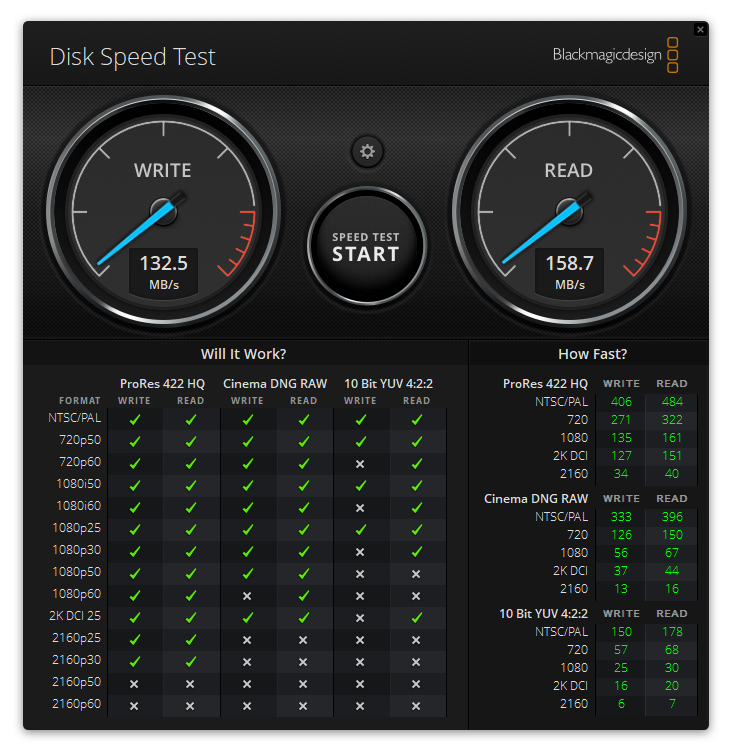
In comparison, the Samsung EVO Select 1TB hit a read speed of 158.9 MB/s and a write speed of 122.3 MB/s, while the premium Samsung PRO Ultimate reached a read speed of 193.1 MB/s and a write speed of 129.1 MB/s.
IOMeter Test
We also ran the microSD card through IOMeter, a more detailed benchmark than something like Blackmagic. While this benchmark gives a quick look at real-world transfer speeds, IOMeter lets us dig deeper into workloads like random and sequential performance. We tested both Lexar cards with a single thread to simulate lighter use and with four threads to see how the cards handle heavier, more demanding scenarios.
In our 1-thread IOMeter tests, the Lexar Professional GOLD microSD card posted 246.7MB/s for sequential 2MB reads and 195.0MB/s for sequential 2MB writes. Random 2MB performance reached 194.8MB/s for reads and 86.5MB/s for writes. For smaller 4K random operations, it recorded 1,710 IOPS for reads and 1,118 IOPS for writes. For comparison, the Samsung EVO Select and PRO Ultimate cards posted lower sequential read and write speeds but showed higher 4K random IOPS numbers, particularly in small file reads and writes.
Here’s a full comparative breakdown:
| IOMeter (1 Thread) | Lexar Professional GOLD | Samsung EVO Select | Samsung PRO Ultimate |
| Seq 2MB Read | 246.7MB/s | 158.8MB/s | 191.2MB/s |
| Seq 2MB Write | 195.0MB/s | 120.2MB/s | 128.6MB/s |
| Random 2MB Read | 194.8MB/s | 146.5MB/s | 174.3MB/s |
| Random 2MB Write | 86.5MB/s | 99.6MB/s | 102.9MB/s |
| Random 4K Read | 1,710 IOPS | 2,599 IOPS | 2,873 IOPS |
| Random 4K Write | 1,118 IOPS | 1,951 IOPS | 1,802 IOPS |
In the 4-thread test, the Lexar card improved slightly in sequential performance, recording 264.0MB/s for 2MB reads and 197.4MB/s for 2MB writes. While Random 2MB read performance peaked at a decent 190.6MB/s, random 2MB write performance dropped significantly to 5.84MB/s. This likely appears to be due to oversaturation during this specific test scenario; however, based on the intended use cases, it is not something users are likely to encounter in real-world applications.
For comparison, the Samsung cards maintained more consistent results across random 2MB writes in the multi-threaded test, while also posting higher 4K random IOPS scores.
Here’s a detailed breakdown:
| IOMeter (4 Thread) | Lexar Professional GOLD | Samsung EVO Select | Samsung PRO Ultimate |
| Seq 2MB Read | 264.0MB/s | 158.8MB/s | 191.2MB/s |
| Seq 2MB Write | 197.4MB/s | 120.2MB/s | 128.6MB/s |
| Random 2MB Read | 190.6MB/s | 146.5MB/s | 174.3MB/s |
| Random 2MB Write | 5.84MB/s | 99.6MB/s | 102.9MB/s |
| Random 4K Read | 1,947 IOPS | 2,599 IOPS | 2,873 IOPS |
| Random 4K Write | 1,114 IOPS | 1,951 IOPS | 1,802 IOPS |
Lexar Professional 2000x SD Card Performance
Blackmagic Diskspeed Test
Moving on to the Lexar Professional 2000x SD card, it reached 190.1MB/s read and 170.3MB/s write in our Blackmagic bench. While still decent speeds, these results came in about 100MB/s lower than the card’s quoted maximum speeds for reading and writing.
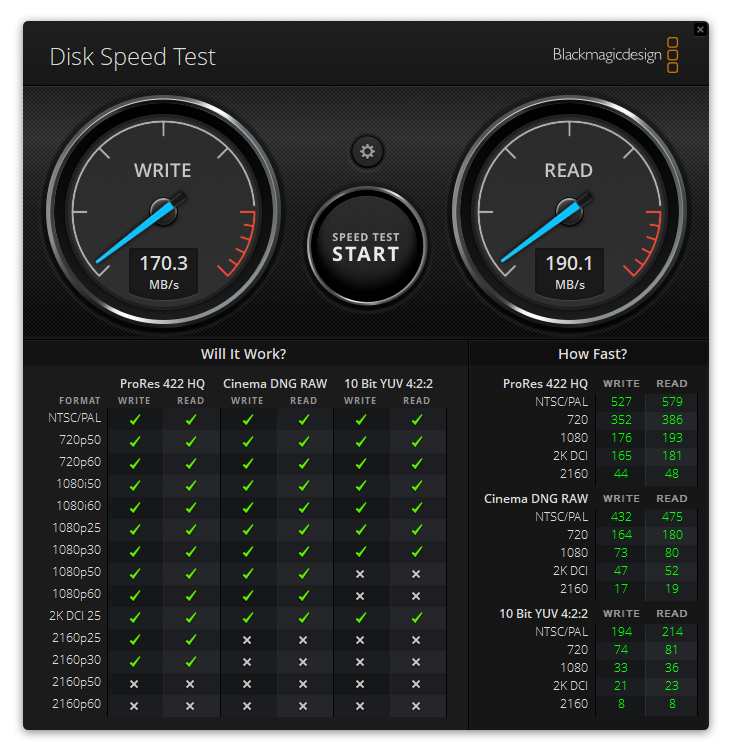
For comparison, the previous generation Lexar Professional 1800x posted 204.2MB/s read and 104.5MB/s write speeds.
IOMeter Test
In our 1-thread IOMeter tests, the Lexar Professional 2000x SD card recorded 272.0MB/s for sequential 2MB reads and 227.5MB/s for sequential 2MB writes. Random 2MB performance reached 194.8MB/s for reads and 159.8MB/s for writes. For smaller 4K random workloads, it posted 893 IOPS for reads and 1,952 IOPS for writes. For comparison, the older Lexar Professional 1800x showed lower sequential and random 2MB performance but higher 4K random read IOPS during the single-threaded test.
Here’s a detailed look:
| IOMeter (1 Thread) | Lexar Professional 2000x | Lexar Professional 1800x |
| Seq 2MB Read | 272.0MB/s | 191.2MB/s |
| Seq 2MB Write | 227.5MB/s | 128.6MB/s |
| Random 2MB Read | 194.8MB/s | 174.3MB/s |
| Random 2MB Write | 159.8MB/s | 102.9MB/s |
| Random 4K Read | 893 IOPS | 2,873 IOPS |
| Random 4K Write | 1952 IOPS | 1,802 IOPS |
The Lexar Professional 2000x posted 232.0MB/s for sequential 2MB reads and 273.2MB/s for sequential 2MB writes. Random 2MB read and write speeds came in at 149.0MB/s and 153.2MB/s, respectively. For 4K operations, it hit 2,154 IOPS on reads and 917 IOPS on writes.
We didn’t have 4-thread data for the older 1800x model, so we could only compare single-thread results between the two cards.
| IOMeter (4 Thread) | Lexar Professional 2000x |
| Seq 2MB Read | 232.0MB/s |
| Seq 2MB Write | 273.2MB/s |
| Random 2MB Read | 149.0MB/s |
| Random 2MB Write | 153.2MB/s |
| Random 4K Read | 2,154 IOPS |
| Random 4K Write | 917 IOPS |
Conclusion
The Lexar Professional 2000x SD Card and the Lexar Professional GOLD microSDXC Card offer strong, high-speed storage solutions for many users. These cards are built to handle demanding tasks like shooting 8K video, capturing bursts of RAW images, and managing large game files without slowing down. We used Lexar’s WF710 card reader for our testing, which helped maximize the cards’ performance thanks to its fast UHS-II support and dual-slot design.
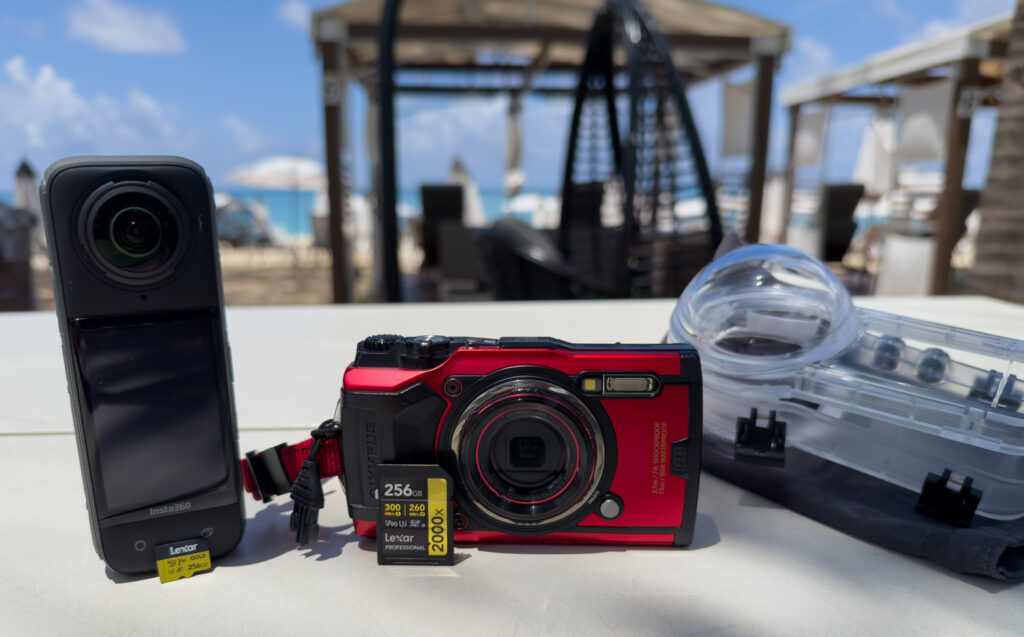
When it came to performance, both cards generally delivered what we expected. The 2000x SD card showed excellent sequential and random speeds during IOMeter testing, efficiently handling large file transfers and heavier workloads without issue. While the Blackmagic results came in lower than its quoted maximums, this is pretty typical for real-world testing and doesn’t reflect any weakness. The microSD model also performed well, especially in single-threaded sequential workloads where it hit strong read and write numbers. We saw a considerable drop in the 4-thread 2MB random write test. However, this looks to be more of a saturation issue under higher-than-normal loads and isn’t something users would likely encounter during real-world tasks like recording drone footage or transferring videos. Overall, both cards showed strong, consistent performance for the work they’re designed to handle.
The 256GB Lexar Professional 2000x SD card is priced at $175, putting it on the more of premium side of the market. However, it’s competitively priced compared to high-end options like the SanDisk Extreme Pro UHS-II SD card, which carries slightly better quoted speeds but a similar price tag. Meanwhile, the 256GB Lexar Professional GOLD microSD card is affordable at $45.
Ultimately, both cards are solid choices depending on your specific needs. The SD card is geared toward professionals who require high speed and reliability for photography and videography projects. At the same time, the microSD version is an excellent fit for drone pilots, action cam users, and mobile gamers looking for fast transfers and dependable video capture.
Lexar Cards at Amazon (affiliate link)




 Amazon
Amazon